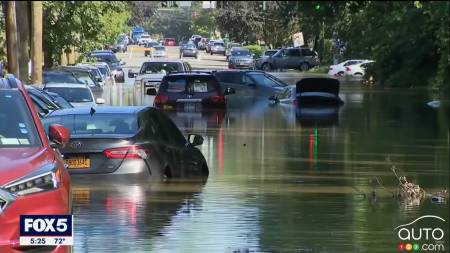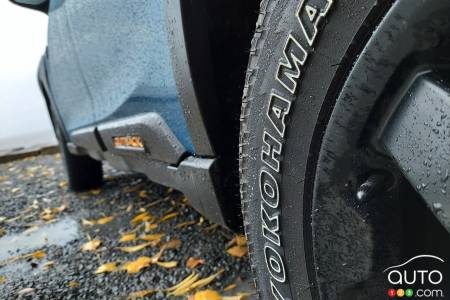Beware of vehicles flooded during hurricanes and declared “total losses”; some of them could well end up on the used car market.
This week, images of the devastation caused by Hurricane Ian in several parts of Florida are everywhere, on TV and online.
Once again, the weather is showing us that when all’s said and done, it still holds the big end of the stick. Among the images shared all over, there are many of flooded vehicles, on roads, in parking lots and in private garages.
Here then is a timely reminder of a lesson history has taught us: Following major disasters of this kind, many vehicles declared flooded end up elsewhere on the continent being sold to consumers who have no idea they’re buying damaged goods.
Browse cars for sale available near you

We saw this after Hurricane Katrina in 2005, and after Sandy in 2013. After both events, CarFax estimated that thousands of vehicles ended up on the market after being damaged by water. And make no mistake, this happens after smaller-scale events that get much less publicity as well. Buyer beware, as they say.
That applies doubly these days, given the shortage and high prices of used vehicles, coupled with strong demand. It’s easy to imagine some ill-intentioned souls are already thinking of schemes to recover some of those flooded by Ian in Florida.
Last Consumer Reports magazine published a series of tips on what to look for to avoid being saddled with a previously flooded vehicle.
- Inspect the carpets for signs of water saturation, such as a musty or muddy smell. Brand new carpets in an older vehicle can also be a red flag;
- Check the seat mounting screws to see if they’ve been recently replaced; that’s a sign that the bucket seats may have been removed;
- Inspect headlights and lights. A visible water line may still appear on the lens or reflector;
- Inspect hard-to-clean areas like the spaces between the trunk panels and under the hood for mud and debris. Go where your eyes can't go at first glance;
- Look at the bottom edges of racks or panels, to see if there’s dirt where dirt doesn't usually settle;
- Take a look at the heads of any unpainted, exposed screws under the dash. Bare metal shows signs of rust in flooded cars;
- Check to see if the rubber drain plugs under the car and at the bottom of the doors appear to have been removed recently. This may have been done to drain water.
And, if in doubt, consult an expert. Of course, any flooded vehicles won't be appearing for sale for a while. They’ll have to be “readied”, and they’ll come to market as people have started to forget about the hurricane and about the need to be vigilant.



